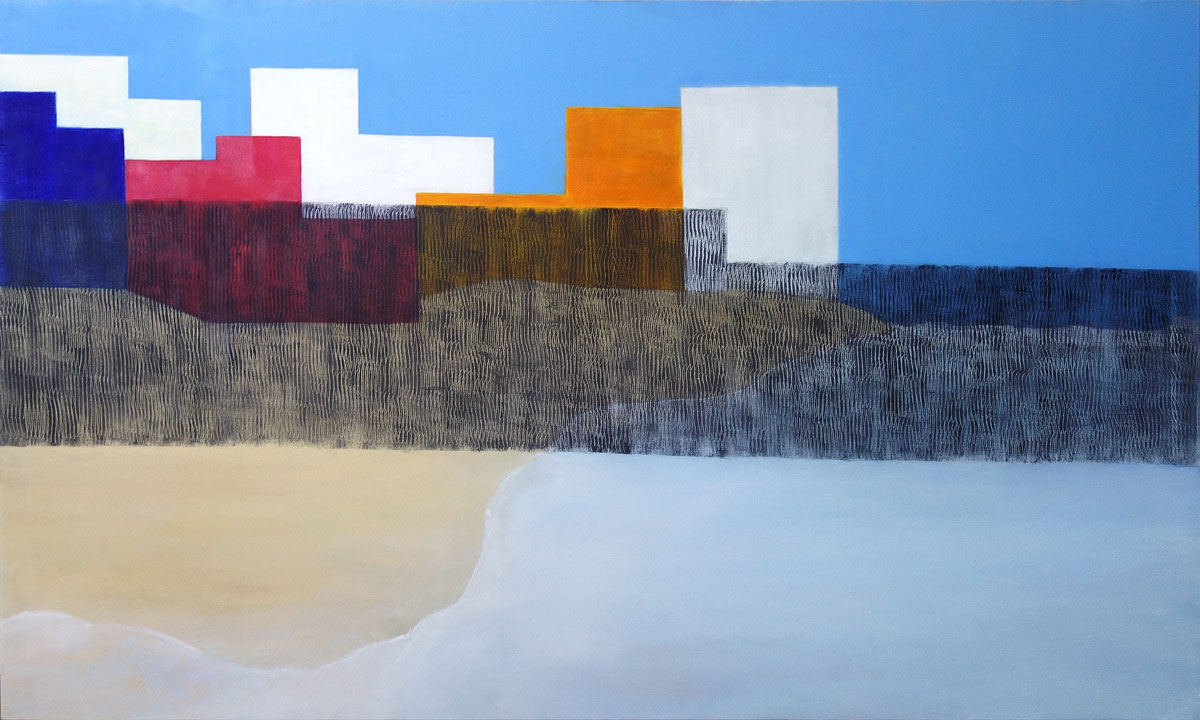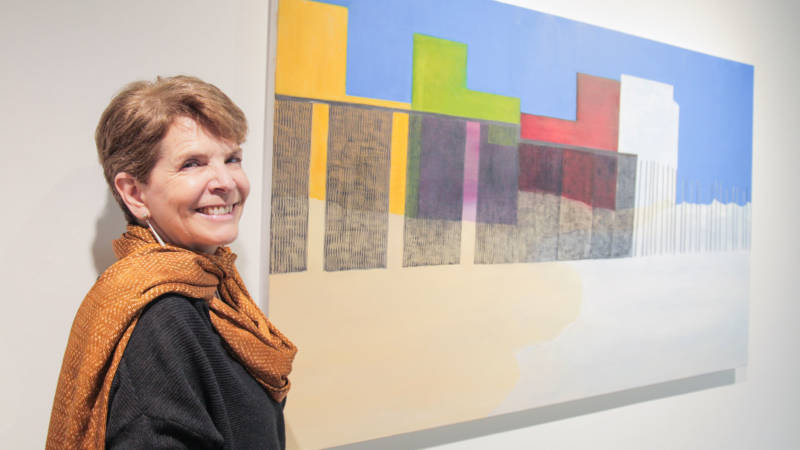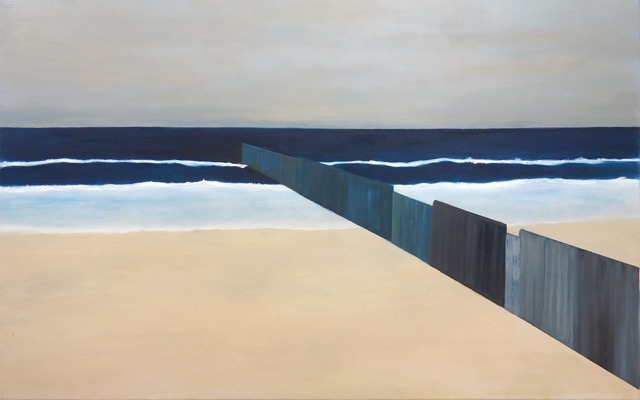Last week, Sean Hannity’s correspondent Lawrence Jones tweeted out a photo of himself at the U.S./Mexico border sporting what appeared to be a protective vest. According to Jones, he wore the tactical vest at the request of U.S. Customs and Border Protection (CBP).
The tweet sparked outrage on social media, especially among journalists who cover stories along the border. For many, the image simply spread misplaced hysteria around immigration issues, which the President calls “a national emergency.”
For María Blanco, this exchange proved her first solo show at Emeryville’s George Lawson Gallery, Borders and Walls—on view through April 27—could not be more timely. In oil paintings, Blanco repeatedly represents the physical barrier of the border—her 20 years of experience as a civil rights litigator and advocate give her a far broader and more meaningful understanding of the region than any single photograph can provide.
Borders and Walls shows the boundary as she remembers it from growing up in San Diego. The Mexican side is rendered in the vivid colors of the Tijuana landscape. Inspired by the repetition of Jasper Johns’ flag paintings and the simplified elements in Jacob Lawrence‘s Migration Series, she seeks to capture the “extended life” of the border.
KQED Arts chatted with Blanco about her work as an artist and her day job as executive director of the Immigrant Student Legal Services Center, which provides immigration-related legal services for undocumented students at nine University of California campuses.

The most fascinating aspect of your work is your background as an activist; immigration is part of your daily job. Now, you decided to paint. What made you want to get into painting, and specifically tackle this subject?




